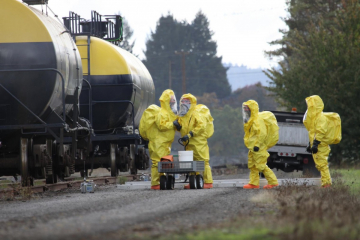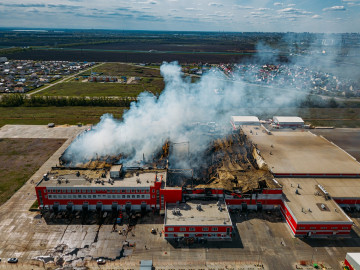It seems like every day we hear about emergencies on the news. Have you been thinking about how an emergency might impact your operations and wondering if you’re prepared? Let us help you evaluate that concern and put steps in place to mitigate potential weak points.
Emergency incidents are not uncommon but can quickly become a focus in the public eye.
Let’s take a closer look at how organizations can prepare to meet incidents head-on by creating, practicing, and properly implementing emergency response plans.
Tips For Creating a Comprehensive Emergency Response Plan
An actual emergency is where the contents of your plan and your organization’s people are put to the test. We have written extensively about emergency incident response planning best practices, and have compiled that knowledge here to help you get started preparing or updating your own emergency response plan.
Forecasting Emergencies
Emergency preparedness requires understanding the potential fallout from incidents ranging from individual injuries to worst-case scenario events and ensuring that your organization is ready to respond.
Areas of risk to consider and evaluate when developing your plan include:
- Workforce safety in routine settings
- More typical emergencies such as fires or regional natural disasters
- Unusual natural disasters that may have recently become more common with climate change
- Incidents that could expand beyond site boundaries
- Off-property incidents, such as failures along transportation routes
- Industry-specific risks
This is by no means an exhaustive list of possible issues to consider but rather offers a starting point for identifying potential areas of risk.
Learn more about how to create targeted emergency preparedness plans: In Case of Emergency: Plans to Prepare Your Business for the Unknown
Understanding What’s at Stake
As you develop or evaluate your emergency preparedness plan, it is essential to understand the potential impact incidents could have on your workforce, the environment, the surrounding community, and your bottom line.
- Are you taking the correct steps to prevent incidents at the workplace, and providing your workforce with proper safety training?
- What proactive measures can you take to mitigate environmental risk from potentially hazardous materials your organization manufactures or uses?
- Does your organization have a good working relationship with surrounding emergency response agencies?
- Do your processes and policies align with any applicable regulations that govern your industry or jurisdiction?
When you have an idea of who or what may potentially be affected by an emergency incident, it helps you target your planning with greater precision.
Learn more about how you can ensure your organization is executing your response plan properly to minimize impact: Take Control of Your Incident Response
Working with the Right Partners
Your emergency preparedness plan must reflect compliance with any applicable laws and regulations. Having a good working relationship with governing authorities will help ensure that you have accounted for all possibilities and, should an emergency arise, are prepared to follow outlined best practices and any required reporting.
The right partners can also help you manage the complex transition between the emergency response and investigation/remediation stages. Bringing on experts in emergency response and incident management can expedite the process, saving you time and money, and potentially reducing the overall impact and liability of the incident.
Learn more about the stages of emergency response and how incident management professionals can help: Moving from Reactive to Proactive: Lessons from Three Decades of Incident Management
Emergency Response Plans: Not If, But When
Ignoring emergencies does not make them go away, so it’s best to be prepared well ahead of time so you can meet problems in the moment and reduce the total negative impact of whatever may occur.
Having and practicing a comprehensive set of emergency preparedness plans ensures you will be able to respond, mitigate, and remediate with attention to the well-being of your workforce, your community, the environment – and your brand.
How can Antea Group’s Incident Management (AIM) help you prepare for and respond to emergencies?
Want more news and insights like this?
Sign up for our monthly e-newsletter, The New Leaf. Our goal is to keep you updated, educated, and even a bit entertained as it relates to all things EHS and sustainability.
Have any questions?
Contact us to discuss your environment, health, safety, and sustainability needs today.






